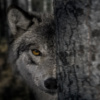Myths & Legends Of The Vampire
← Mentorships
...

...
Myths about Vampires
Picture Of Vampire Aversion To Crosses
The myth of Vampires managed over last two hundred years to expand significantly from its initial state. Influenced by the thousands of year old tradition of many myths around the world, modern day vampires gained many supernatural abilities and traits that are often created only for some literary piece of the movie. Here are some of the most famous myths about vampires, how they live, feed, and how they can be defeated.
One of the primary culprits for the rise of several vampire myths is rare skin and neurological disorder Porphyria, which is often the result of family inbreeding that was somewhat present in medieval Europe. Its effect on the human body can vary, from skin blisters, pigment changes, inability to heal skin, deterioration of the lips and nose, extreme photosensitivity, receding tissues of the gums and lips and irregular hair growth across entire body (most surely leading to the rise of lycanthropy myths). The ghastly presence of such people often fueled myths, especially since they did not like the sun (it bought them blisters on the sensitive skin), did not like garlic (it caused them severe allergic reactions), and did not like to view themselves in mirrors.
Drinking blood - One of the most telltale signs of the vampire is his need to consume blood to sustain its undead existence. This belief was not only limited to vampires, but it can be found in countless of other mythical creatures around the world - from the vampire bird like forest spirits in Africa, to the evil spirits in China. The reason this myth gained such popularity was the rare disease called Porphyria which (among other things) caused the lowering of hemoglobin levels in the blood. Because of that, many medieval people who had this disease practiced drinking fresh blood.
Immortality -Vampires are often depicted as incredibly powerful creatures who after they were converted to become vampire could sustain their life indefinitely by drinking blood or receiving their sustenance with other unholy ways (feeding off emotions, sexual power or soul energy).
Sleeping in coffins - Because of the lack of medical knowledge and body decomposition in medieval times, vampires gained a reputation that they prefer sleeping in the coffins. In reality, dry and cold conditions in the deeply buried coffins can enable the body to remain relatively well preserved even for several weeks. Also, slight coloring of the cheeks, lips and hands only gave more proof that the corpses are consuming the blood.
Aversion to Sunlight - Disease Porphyria is once again to blame for this myth because people who have it cannot repair their skin from UV ray damage. Also, popular myth state that vampire eyes are configured to work only in night conditions and that sunlight can cause them to have epileptic shocks. Religious influences upgraded those effects into full-blown fire and destruction of a vampire.
Picture Of Vampire Aversion To Garlic
Stake through the heart - This tradition comes from the medieval times when medical knowledge did not account the presence of gasses in the decomposing corpses. After driving a stake in a corpse’s heart, people could witness the moans coming from the corpse's mouth and deflation of body, all providing proof that something unnatural was present in the body.
Shape shifting - like many old myths about vampires involved animal spirits, this supernatural ability was present even in modern vampire tales. They can most often transform into bats, wolves and sometimes mist.
Reflection in a Mirror -Mirrors have been present in burial rituals in some cultures for a long time. Some believed that if mirror reflected the image of a deceased person that it would return to life. Also, individuals who had Porphyria avoided mirrors because of their ghastly look.
Aversion to Garlic -Again, rare disease Porphyria is one of the culprits for this myth because garlic contains chemicals that exacerbate the symptoms of the disease.
Aversion to Crosses, Holy Water and consecrated ground - Because vampire craze had such a profound effect on European culture, religion provided one of the solutions to how we can fight against vampires. In the original myth of Count Dracula (Transylvanian Count VladTepes), he was cursed by the god for twisting his faith and slaughtering thousands in god's name. This religious aspect of the story caused vampires to be repelled by holy ground, holy water, crosses or any other objects from other non-Christian religions.
http://www.vampirefacts.net/vampire-history/myths-about-vampires/#:~:text=%20Myths%20about%20Vampires%20%201%20Drinking%20blood,are%20configured%20to%20work%20only%20in...%20More%20
...

...
RECENT JOURNAL POSTS
Ophidian (66)

Primogenitor (99)

Termagant (58)
REAL VAMPIRES LOVE VAMPIRE RAVE
Vampire Rave is a member of
Page generated in 0.045 seconds.






